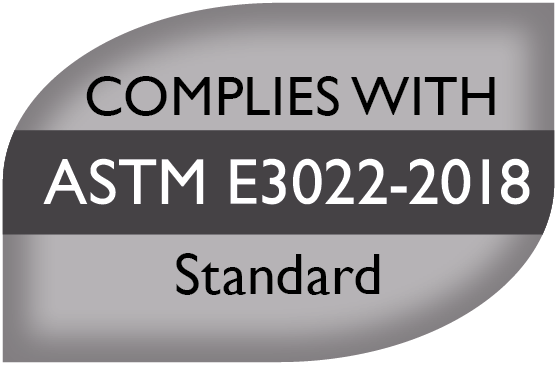Why do we need ASTM E3022-18?
Blog | 17.09.20
ASTM E3022-18 was created to fulfil the need for a standard outlining the minimum requirements needed to confirm that a UV LED light is suitable for inspections in an application as critical as NDT. Unless you can replace the landing gear of a plane while flying or take the responsibility that a non-compliant UV LED light can be used, this standard is necessary for safety.
ASTM E3022-15, the predecessor of E3022-18 was released on September 1st, 2015. This standard was the collective work of a task force comprised of UV light manufacturers and industry experts with over 200 years of combined experience. This task force was chaired by a member of the US Airforce and convened regularly for several years before submitting its findings in its final form for voting. Labino AB was one of the companies that participated and contributed with its industry knowledge.
Five years later, this standard has developed into a global standard and a benchmark for UV LED lights used in fluorescent penetrant and fluorescent magnetic particle inspections. Some PRIMES, such as Airbus, have incorporated ASTM E3022-18 and used it as the cornerstone of their own internal testing method (i.e. Airbus AITM6-1001 – issue 12). NADCAP Audit criteria checklists (AC711/1) for auditees seeking NADCAP accreditation also incorporate similar requirements as ASTM E3022-18, such as validation of a maximum peak wavelength of 370nm (Section 3.5.1), stabilization and sufficient UV intensity (Section 5.13.7).
The objective of the ASTM E3022-18 standard is to outline the procedures for testing the performance of UV LED lights. ASTM E3022-18 lists all reporting requirements that are considered essential to prove such lights are flawless and suitable to be used for fluorescent penetrant and fluorescent magnetic particle inspections.
“…outline the procedures for testing the performance of UV LED lights. ASTM E3022-18 lists all reporting requirements that are considered essential to prove such lights are flawless…“
The ASTM E3022-18 standard states that the tests, documentation of all the test results and certification of the UV lights are the responsibility of the manufacturer. These actions are not intended to be performed by the end users. No end user is expected, and we suspect the great majority is not willing either, to:
(a) purchase thousands of dollars’ worth of equipment (a minimum list of what is required is provided on page 15) to validate the performance of inspection UV-A lights, it has already paid thousands of dollars for.
(b) take on the responsibility and allocate resources internally, to master the ASTM E3022-18 procedures and measurements, to the same extend as the manufacturers.
According to ASTM E3022-18, it is the responsibility of the UV light manufacturer to test each lamp sold for compliance. The manufacturer must report the findings in a Serialized Unit Test Report and submitted to the user of the light along with a certificate stating that the light has been tested and found to be in compliance. UV LED lights must be tested:
(a) to comply with the limited acceptance tests required by ASTM E3022-18, Section 8.
(b) as a single unit, taking into consideration ALL the parts that make up the light such as the housing, filter, diodes, electronic circuit design, optical elements, cooling system, and power supply combination (Section 1.2).
According to ASTM E3022-18, it is also the responsibility of the UV LED light manufacturer to test each lamp model for compliance, using a serialized reference UV LED light. The manufacturer must report the findings in a Type Test Report and make this report available to the user. The reference UV LED light must be tested:
(a) to comply with the tests required by ASTM E3022-18, section 7.
(b) as a single unit, taking into consideration ALL the parts that make up the light such as the housing, filter, diodes, electronic circuit design, optical elements, cooling system, and power supply combination (Section 1.2).

